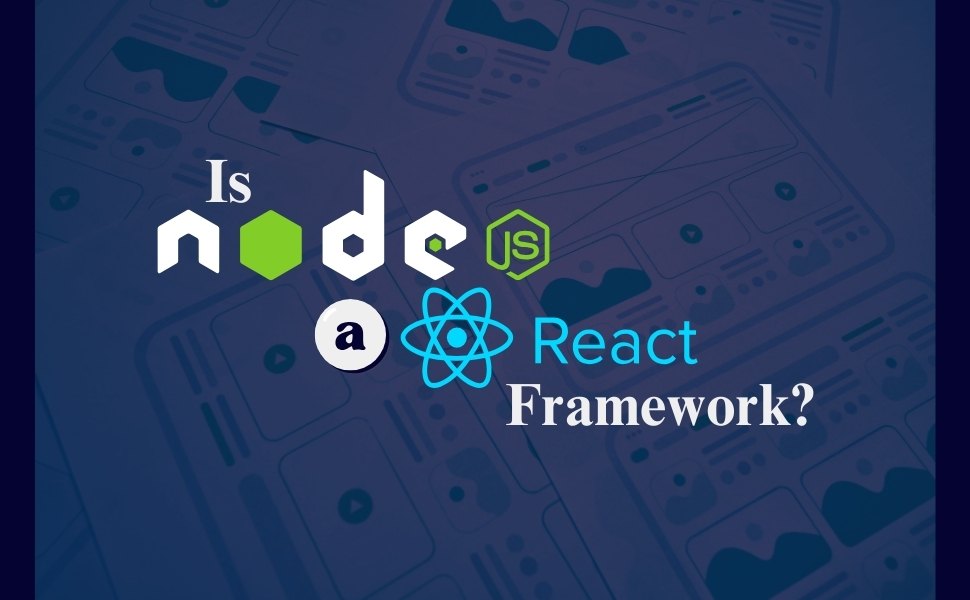Do you need to build dynamic web applications effortlessly? AngularJS, a powerful framework, makes it possible. But pairing it with the best AngularJS frameworks can supercharge your development process. These best front-end frameworks enhance functionality, save time, and ensure scalability.
So, whether you’re building a simple website or a complex web application, choosing the right framework from the top AngularJS options can make all the difference in your development journey.
Before jumping to the best frameworks of AngularJS, we will discuss what AngularJS is, why we should use it, its importance, and whatnot.
Let’s get started.
What is AngularJS?
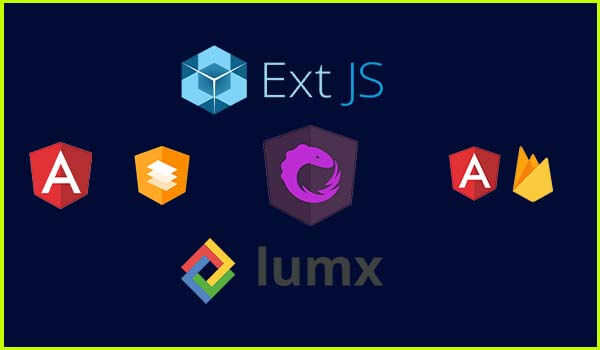
AngularJS is a JavaScript-based open-source front-end web framework developed by Google in 2010. It helps developers build dynamic web applications by extending HTML’s capabilities. Rather than writing complex JavaScript code, AngularJS lets you use special HTML attributes (called directives) to create interactive features.
Key features of AngularJS:
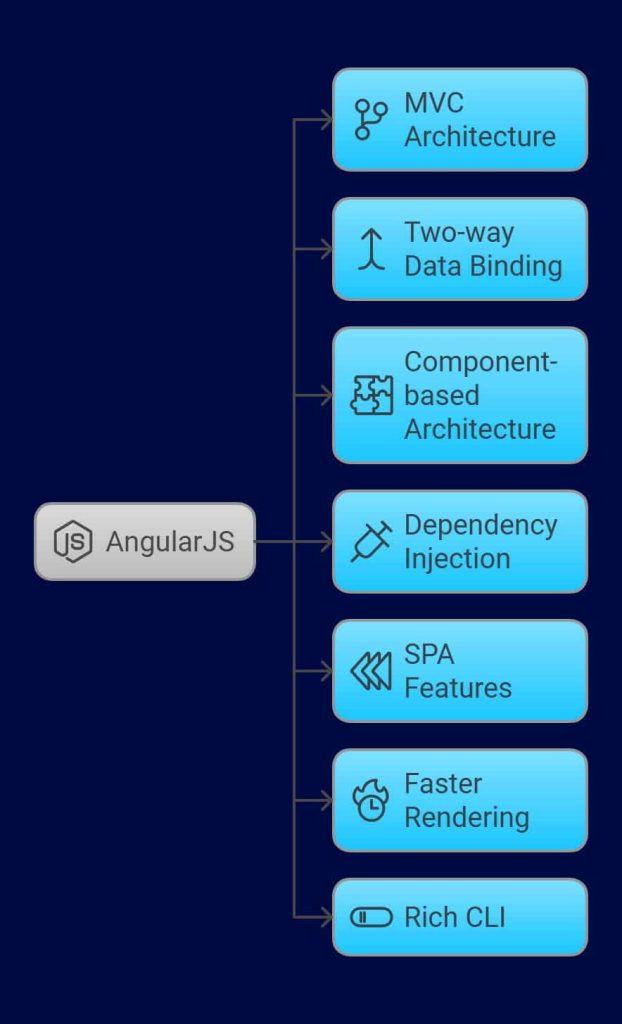
AngularJS offers powerful features like two-way data binding and dependency injection, which streamline development. These features make it easier to build dynamic, scalable web applications with clean and efficient code. Let’s learn some advanced features of AngularJS.
- MVC (Model-View-Controller) Architecture
AngularJS separates logic into Model, View, and Controller, making the code easier to manage and maintain. This structure organizes the app and helps with scalability. It simplifies handling complex applications by dividing tasks. - Two-way Data Binding
Two-way data binding synchronizes the model and view automatically. Changes in one update the other, reducing the need for extra code. This feature ensures dynamic data flow and efficient UI updates. - Component-based Architecture
AngularJS organizes applications into reusable components, each containing its own logic and template. This promotes modularity and makes applications easier to maintain and scale. Reusability of components speeds up development. - Dependency Injection
Dependency injection automatically manages component dependencies. It improves testability and reduces code complexity. Services and components are easily injected, making the code more modular and maintainable. - SPA Features (Routing, Templating, and AJAX Handling)
AngularJS supports Single Page Applications with routing, templating, and AJAX. These features provide dynamic content loading without page refreshes, enhancing speed and user experience. - Faster Rendering Due to Virtual DOM Processing
AngularJS uses virtual DOM to optimize rendering by updating only changed parts of the UI. This leads to faster performance, especially in large applications. It minimizes unnecessary DOM manipulations. - Rich Command Line Interface (CLI)
AngularJS CLI simplifies tasks like code generation, building, and testing. It automates common tasks, reducing manual work and speeding up the development process. The CLI streamlines development and improves workflow efficiency. You can read more about Javascript Frontend Frameworks.
Here’s a simple example:

Important note: AngularJS (also called Angular 1.x) is different from the newer Angular (2+). While AngularJS is still used in many existing projects, new projects typically use modern Angular versions, which were completely rewritten and offer improved features and performance.
The Power of AngularJS Frameworks for Robust Web Applications
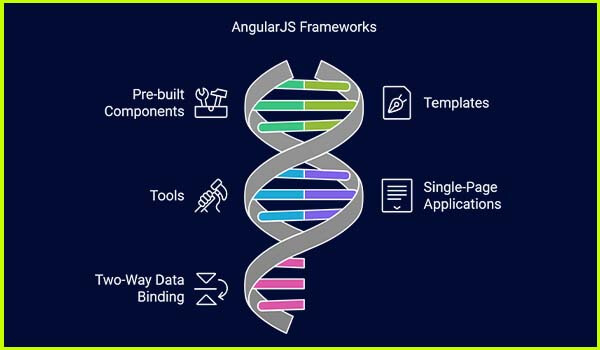
So, why use AngularJS frameworks? You might not know the power of it. Once you know about the frameworks of AngularJS, you will love it.
Well, AngularJS is a powerful framework for building vigorous web applications. It was developed by Google to make coding easier for developers. It helps create robust web applications with less effort. To enhance its functionality, developers often use complementary frameworks.
The popular AngularJS frameworks streamline development and improve performance.
In addition, the AngularJS Frameworks stand out as essential resources that help create robust and scalable applications. These frameworks offer pre-built components, templates, and tools that save countless hours of coding time.
Besides, using AngularJS, developers can build single-page apps with features like two-way data binding and dependency injection. It also ensures cleaner code and faster development. Many developers prefer it for creating interactive and scalable websites.
Need custom software development? Well, you can hire developers in 24 hours.
Angular – A Framework or Library?
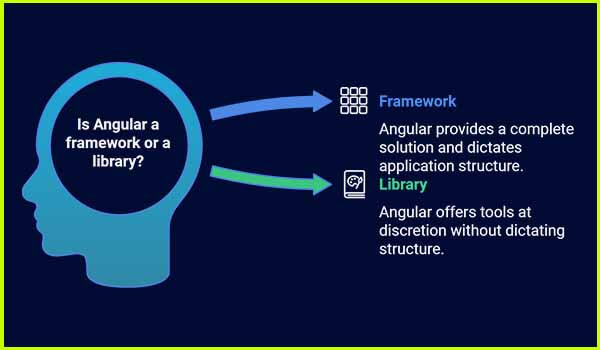
Angular is often debated as either a framework or a library. However, it is more accurate to call Angular a framework.
Why it’s a framework and not a library?
Well, Angular is considered a framework and not a library because it provides a complete solution for building web applications.
Unlike a library, which offers a set of tools to use at your discretion, a framework dictates the structure and flow of your application.
With Angular, you follow its guidelines and use its built-in features like routing, dependency injection, and two-way data binding. This level of control and structure makes Angular a framework, as it defines how you organize and develop your app, rather than just offering individual functions or methods.
7 Best AngularJS Frameworks for Web Developers
If you’re a web developer using AngularJS, you may want to explore different AngularJS frameworks that can help enhance your projects. These frameworks offer extra tools and features, making web development faster and easier. Let’s take a look at the top AngularJS frameworks that are popular among developers today.
1. Ionic Framework

The Ionic Framework is one of the most popular choices for building mobile and web apps using AngularJS. Launched in 2013, it focuses on helping developers create hybrid mobile apps. Ionic uses web technologies like HTML, CSS, and JavaScript to build apps that work on iOS, Android, and the web.
It is open-source and has gained massive popularity, with over 5 million developers worldwide using it. About 40% of developers choose Ionic for mobile app development. Its rich library of components and pre-built templates makes it easier to build sleek and responsive apps quickly.
Learn detail about .net core framework.
2. Angular Material
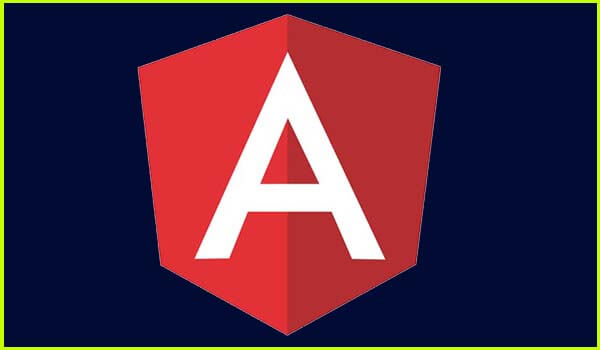
Angular Material is a UI component library that follows Material Design principles. This framework helps developers create stylish and consistent user interfaces for Angular applications. Launched by Google, it provides a set of pre-built, customizable components like buttons, forms, and navigation bars.
Since it is open-source, Angular Material is widely used by both small startups and large companies. It is one of the most common tools for developers who need fast, beautiful, and responsive UI designs. It is used by millions of developers, making it a top choice in the Angular ecosystem.
You can read more about the Django framework.
3. UI Bootstrap
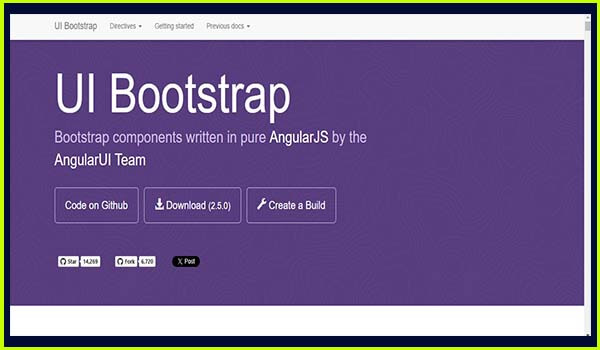
UI Bootstrap is a framework that brings the popular Bootstrap front-end framework into AngularJS. It helps developers easily integrate AngularJS with the ready-made components of Bootstrap. Launched in 2014, UI Bootstrap is open-source and focuses on offering a seamless user experience by removing jQuery dependency.
It has been widely adopted, with over 1 million downloads per month. The combination of AngularJS and Bootstrap is very popular, making UI Bootstrap an essential framework for developers who want a responsive, mobile-first app.
Want to know about HTML Front-End Frameworks?
4. LumX
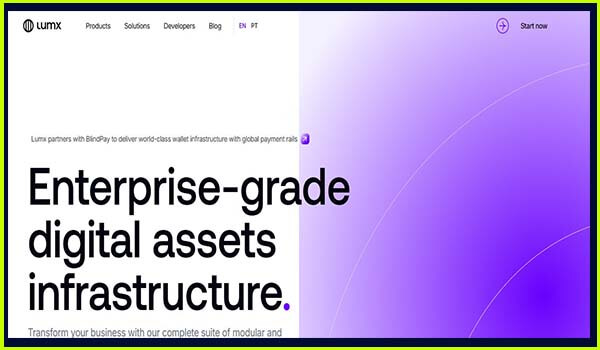
LumX is a front-end framework based on Material Design and AngularJS. Launched in 2015, LumX focuses on creating clean, modern, and responsive designs. It is an open-source framework with a strong focus on mobile-friendly interfaces.
While it’s not as widely used as some other frameworks, it is still quite popular among developers who prioritize speed and simplicity. It offers a unique blend of design and functionality, with about 100,000 downloads per month.
Related: ASP.NET framework
5. ngRx
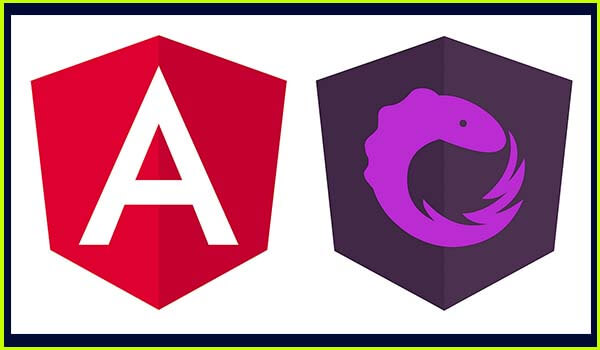
ngRx is a state management framework for AngularJS. It provides tools to manage the application’s state in a predictable way, similar to Redux for React. Launched in 2016, it has grown in popularity due to its ability to handle complex data flows in large applications.
With a strong, active community and regular updates, ngRx is open-source and widely used by developers who build enterprise-level applications. It’s a top choice for managing state in large-scale projects, with around 500,000 downloads each month.
Know details about Python Front-End Frameworks.
6. AngularFire
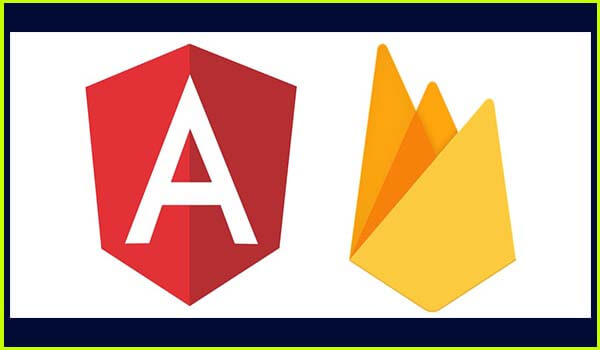
AngularFire is the official library for Firebase and AngularJS. It connects AngularJS applications to Firebase services like real-time databases, authentication, and cloud storage. Since it was launched in 2013, it has helped developers create real-time applications with ease.
This open-source framework has a large following, with over 200,000 active users each month. It simplifies connecting your app with Firebase, making it popular for developers who need fast, real-time capabilities.
However, if you have interests in knowing more, you can enrich your knowledge by reading .Net Core Vs .Net Framework.
7. Sencha Ext JS

Sencha Ext JS is a powerful framework for building web applications with AngularJS. It provides a rich set of UI components and tools for data handling, making it ideal for complex, enterprise-level applications. Launched in 2007, it is a well-established, open-source framework.
While Sencha Ext JS has been around for a long time, it is used by a smaller community compared to other frameworks. However, its unique features, such as its comprehensive grid system and charts, make it a solid choice for enterprise applications.
These AngularJS frameworks are widely used by developers to create fast, scalable, and responsive web applications. Whether you’re building a mobile app with Ionic or managing state with ngRx, these frameworks can help speed up your development process and improve the quality of your applications.
Advantages and Disadvantages of Angularjs Frameworks
AngularJS frameworks offer incredible features that make web development faster and more efficient. However, they also come with certain challenges that developers should consider.
| Advantages | Disadvantages |
|---|---|
| Two-way Data Binding | Steep Learning Curve |
| Component-based Architecture | Complexity in Large Apps |
| Rich Toolset | Limited Mobile Optimization |
| Cross-platform Support | Performance Lag in Heavy Applications |
| Large Community Support | Limited SEO Capabilities |
| Faster Development | Dependency on JavaScript |
| Improved Performance | Backward Compatibility Issues |
| Dependency Injection | Requires Additional Tools for SEO |
| Built-in Testing Support | |
| Modular Development Structure | |
| Strong Security Features | |
| Excellent Documentation | |
| Active Ecosystem with Plugins |
How to Choose the Right AngularJS Framework?
Choosing the right AngularJS framework depends on your project needs. Different frameworks offer unique features and tools, so it’s essential to pick one that aligns with your goals.
First, consider the type of application you are building. For mobile apps, Ionic is a great choice, while for enterprise-level apps, Sencha Ext JS may be better. Next, check the framework’s community support and documentation, as they ensure you can find help when needed. Finally, think about the learning curve. A framework with simple features, like UI Bootstrap, is ideal for beginners.
Streamline Your Development Journey with BoomDevs: Your Trusted Partner for AngularJS Solutions
Are you struggling to maintain clean and organized code for your applications? Do complex frameworks leave you overwhelmed?
At BoomDevs, we specialize in delivering tailored solutions to simplify your development process. Whether it’s creating scalable apps or optimizing existing ones, our team ensures your project is efficient and future-ready.
Let us help you turn your challenges into seamless development experiences. Get in touch with BoomDevs today and take your projects to the next level!
Frequently Asked Questions:
Q1: What Are the Key Features of AngularJS Frameworks?
AngularJS frameworks offer features like two-way data binding, component-based architecture, dependency injection, and support for single-page applications (SPA). These features simplify development and improve app performance.
Q2: Why Should Developers Use AngularJS Frameworks?
AngularJS frameworks save time, enhance performance, and provide tools for building scalable and interactive applications. They also ensure cleaner code and support cross-platform development.
Q3: How to Choose the Best AngularJS Framework for Your Project?
Consider your project requirements, such as app type, scalability, and performance needs. Evaluate the framework’s community support, ease of learning, and available documentation. Learn more.
Q4: What Are the Advantages of Using AngularJS Frameworks?
AngularJS frameworks ensure faster development, improve app performance, and support responsive designs. They also offer tools like templates and testing support for streamlined development.
Q5: What Are the Disadvantages of AngularJS Frameworks?
The steep learning curve, performance lag in large apps, and dependency on JavaScript are some drawbacks. Additionally, frequent updates can lead to compatibility issues.
Q6: How Does AngularJS Differ from Other JavaScript Frameworks?
Unlike other frameworks, AngularJS is component-based and supports two-way data binding. It also offers built-in tools for testing, dependency injection, and a modular structure.
Q7: What Are the Future Trends for AngularJS Frameworks?
Future trends include better support for progressive web apps (PWAs), integration with AI tools, real-time data handling, and increased adoption of micro-frontends for flexible development. Learn more about AngularJS frameworks.
Wrapping Up:
In conclusion, the Best AngularJS Frameworks provide powerful tools that simplify web development and enhance app performance. They offer a variety of features like two-way data binding, modular structure, and cross-platform support. By choosing the right framework, developers can build scalable and dynamic applications. These frameworks are essential for modern web development, offering both efficiency and flexibility.
Read More Articles:







